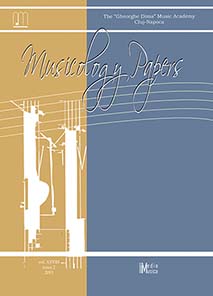Sounds, lines and colors: synesthetic codes in Ligeti´s music
Sounds, lines and colors: synesthetic codes in Ligeti´s music
Author(s): Bianca Ţiplea TemeşSubject(s): Music
Published by: MediaMusica
Keywords: Ligeti; fine arts; Escher; Cézanne
Summary/Abstract: Few modern composers have explored the relationship between sound and image to a greater extent than Ligeti. A self-proclaimed synesthete, he relied on both explicit and implicit visual stimuli to influence his creative process at every level. The arts of painting and graphics provided him with a sense of the decorative, while computer-generated images such as the Julia or Mandelbrot sets supplied him with new and modern means of inspiration. Recognized as a great connoisseur of the fine arts, from Canaletto and Guardi to Picasso, Magritte and the collages of Peter Balke, he seemed to blend sounds, lines and colors in his music, developing compositional methods from pictorial techniques and optical effects. Ligeti borrowed the continuous transformation technique from Escher, the blurring manner from Cézanne, and also had recourse to the so-called objets trouvés from Pop Art, from which he created brilliant musical collages. Moreover, he made subtle use of the Augenmusik manner of depicting words in music in Three Fantasies After Hölderlin or in Nonsense Madrigals, and also sketched in sounds a Self Portrait with Reich and Riley. Owing to the presence of a multitude of visual references in his music, Ligeti occupies a unique territory of intersensoriality and articulates a poetics of synesthesia. The composer himself regarded his work as a window on an eternal sonorous landscape, inviting us to celebrate his music as a brilliant trompe l´oeil of 20th century music.
Journal: Lucrări de Muzicologie
- Issue Year: 2013
- Issue No: 2
- Page Range: 79-91
- Page Count: 13
- Language: English
- Content File-PDF

